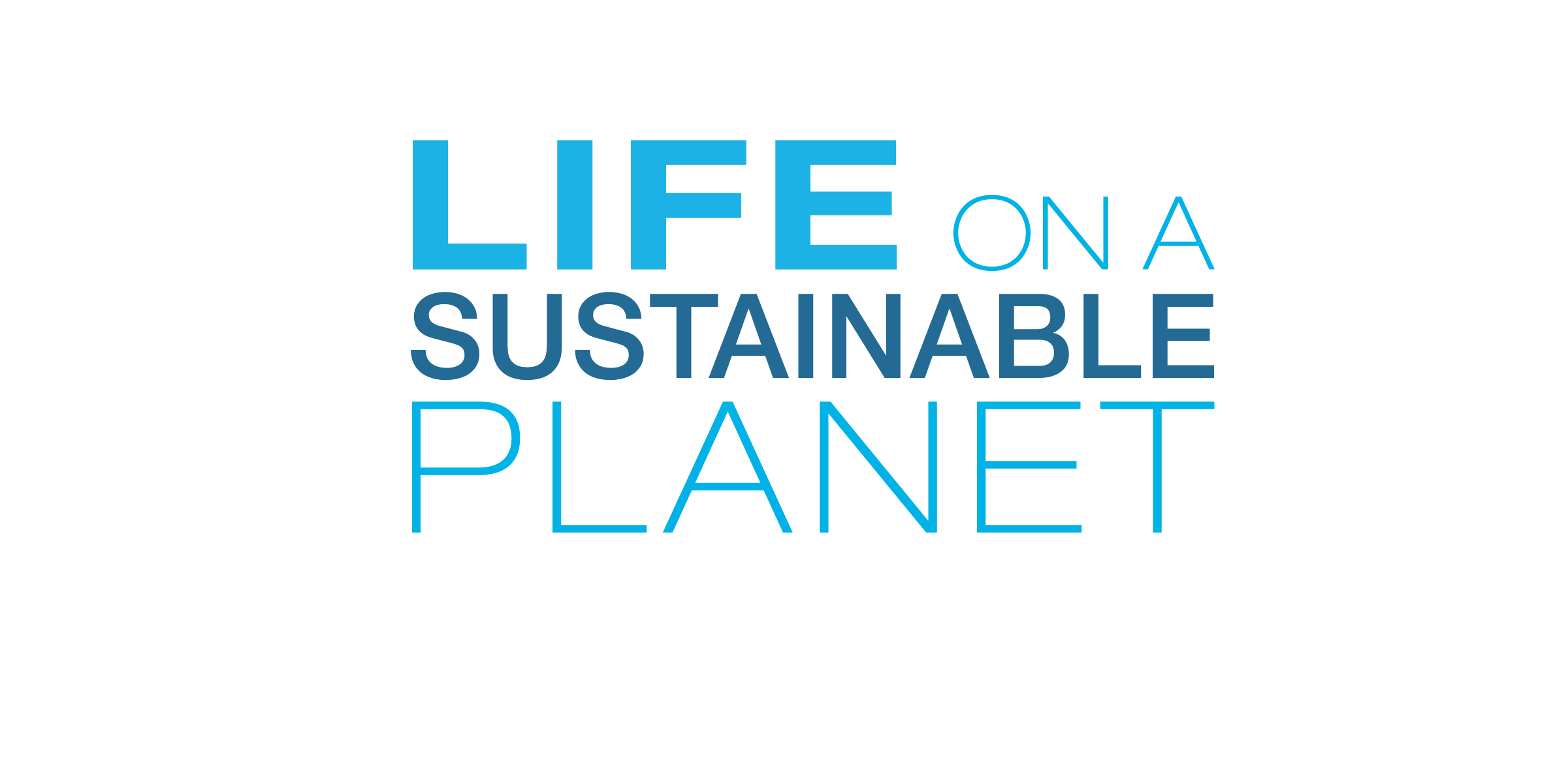Three Undergraduate Students Share Their Remote Research Experience
This summer, a trio of students participating in the National Science Foundation’s Research Experiences for Undergraduates (REU) program took the classic backyard science experiment to a new level.
:focal(800x450:801x451)/https://tf-cmsv2-smithsonianmag-media.s3.amazonaws.com/blogging/featured/Trio_Grid_Wide.png)
This summer, a trio of students participating in the National Science Foundation’s Research Experiences for Undergraduates (REU) program took the classic backyard science experiment to a new level.
With facilities at the Smithsonian Environmental Research Center restricted as a COVID-19 health precaution, researchers Kim Komatsu and Amy Hruska came up with a creative way for their mentees to participate in the scientific process from the safety of their homes. Together, the team designed an experiment that allowed them to look at one issue through three perspectives and, like the riparian ecosystems they were simulating, connect distant landscapes.
We caught up with Rachael Brenneman, Skye Austin, Julia Smith, and their mentors over Zoom to discuss experimental design, ecological restoration, and the challenges and opportunities of remote research.
How did this project get started?
Rachael Brenneman: Amy and Kim had the idea to transition our REU project into a physical backyard experiment and, after explaining it to us, we all went our separate ways to figure out our interests. We took a week or two to figure out how to best set up the experiment, talking through issues like how many pots to have, what species we wanted, and what measurements we were going to take. We all had individual questions, but the basic design and measurements were the same across all three of our yards.
Kim Komatsu: From the science standpoint, doing a project like this is great because we were able to have replication across three different sites. Normally you set up an experiment all in one place, so you can have replication within that place. This way, we were able to do it three different times in different backyards, which allows us to be more confident about the results we get and look at different contingencies based on environmental effects.
Brenneman: Each of us had 60 pots in our yards, with two plants in each pot for a total of 120 plants. Each pot had some combination of three native Virginia species: sensitive partridge pea, Joe-Pye weed, and Virginia wild rye. Half of the pots received extra nitrogen.
Julia Smith: There have been studies that have shown that nitrogen can increase the overall growth of an area but decrease the biodiversity.
Brenneman: After setting everything up and giving the plants a few days to get used to their pots, we scheduled different days of the week for different measurements. Sometimes we would count and measure leaves, and then others, we would measure the height, width, and volume of the plant. We had 120 plants, so measurements would usually take all day. It was a long process, but really rewarding!
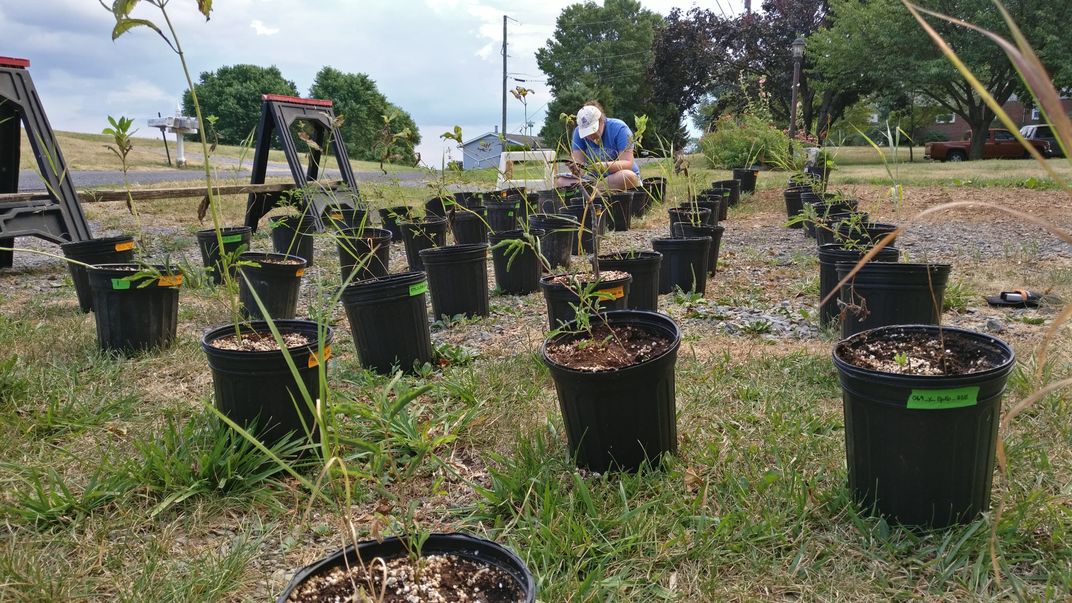
What were your individual topics?
Skye Austin: For my part of the project, I was interested in how native plants in riparian systems take up excess nitrogen from things like fertilizer. Residential and urban areas often use a lot of fertilizer, which runs off into aquatic systems and reduces oxygen in the water, causing issues like eutrophication and mass die-offs. Riparian buffer zones can be constructed around these waterways using native plants, but how much nitrogen can these species really uptake? I wanted to find out what native species are best to use in these riparian buffer areas.
Brenneman: I was really interested in soil – how will combinations of plant species affect the soil, and how are they affected by nitrogen addition? Soil health – measured by amount and diversity of microbes, pH levels, or presence of heavy metals – really affects how the plants do. In restoration sites, if we just plant our plants in the ground and the soil kills them off, that's very counterintuitive. If we know what kinds of plants are at a site and how they will affect the soil, we can plant in ways that nudge the soil health back to where we want it to be.
Smith: I was most interested in the competitive interactions between two plants in a single pot. I was interested to see how the interactions within the pot would change if two of the same species were in the pot as compared to two different species, and how nitrogen addition would affect those. Typically, biodiversity is a useful and desirable thing, and in a riparian buffer, that’s no different. We want to know how the plants in a riparian buffer can coexist, and how nitrogen can shift the possibility for that coexistence, to make sure the buffer will really work.
How did the project setup impact the people you lived with?
Austin: We have a little shed in the back of our yard, so we set all of the pots up there in a sunny spot where we used to have some trees. Originally we were thinking about having 120 pots in the experiment, but my dad said no. He was worried about them killing his grass! I’m really against lawn monocultures, but unfortunately, we live in an area with an HOA, so we have to keep everything neat and tidy. I eventually got him to agree to 60 pots. There are still dead spots in the grass, so he’s upset, but it’s grass – it’s gonna grow back!
Amy Hruska: He was very nice to me when I came to pick up all the stuff from the experiment, so he seemed to have come around to the idea!
Austin: He was happy that I got to do this because it’s a really good experience, but his yard! He had to warm up to it.
Brenneman: I was lucky enough that we had just cut down a tree, so we had an area that didn’t have a lot of grass and I didn’t have to kill much of the lawn. My parents were actually pretty excited – my dad was arguably more excited than me! Both of my parents helped me out over the course of the experiment – my dad with planting and checking on them and, sometimes, my mom would grab a lawn chair and record the numbers I called out while measuring. At the end, we even got to keep a couple of extra plants, so my dad was also very excited about that.
Smith: My parents take a very hands-off approach to the yard, so it was already kind of overgrown. We just mowed it and set down the plants. There are still some dead spots where the pots were, but I imagine everything will grow back. Unfortunately, the rabbits and squirrels were already very accustomed to treating the yard as their salad bar! My animal visitors particularly liked the sensitive partridge pea, so I had a lot of herbivory on my plants. I was also lucky that I had a friend staying with my family during the epidemic, and he was very helpful in setting up and harvesting. It was very nice to do research with the support of my friend and family.
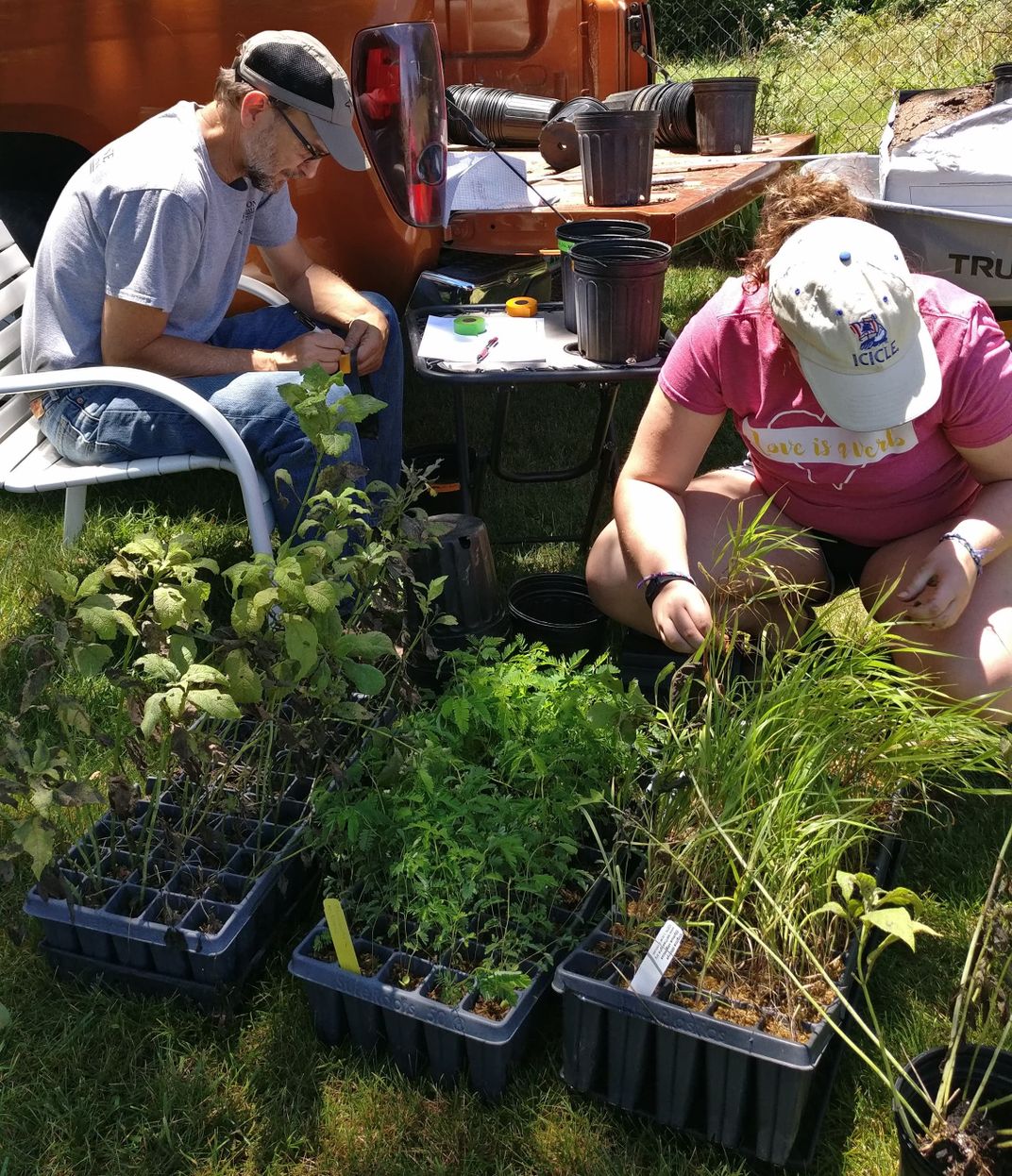
What were some challenges you faced while doing remote research, and how did you overcome them?
Austin: I'm a hands-on person, so going remote was kind of hard. Constant communication was so important. When we were doing our measurements the first week, we would get up in the morning, get a plant out of our array, and talk about how exactly we were going to measure it, which was really helpful.
Brenneman: I will always be sad that I never got to meet all of these people in person, but I hope that will change in the future so we can process the samples. That was the saddest part about going remote, but working together and communicating like this was just fantastic.
Smith: Going remote was tough for me because if we were in person, I would have been able to stop by the lab or ask Skye and Rachael a question without it being an event. Setting up virtual meetings took some adjusting, but honestly, being more proactive about setting up meetings in my life is probably a good skill. There was a very big environment of open communication, and it’s cool to have a record of that. We hit plenty of bumps in the road along the way, but those bumps are important lessons.
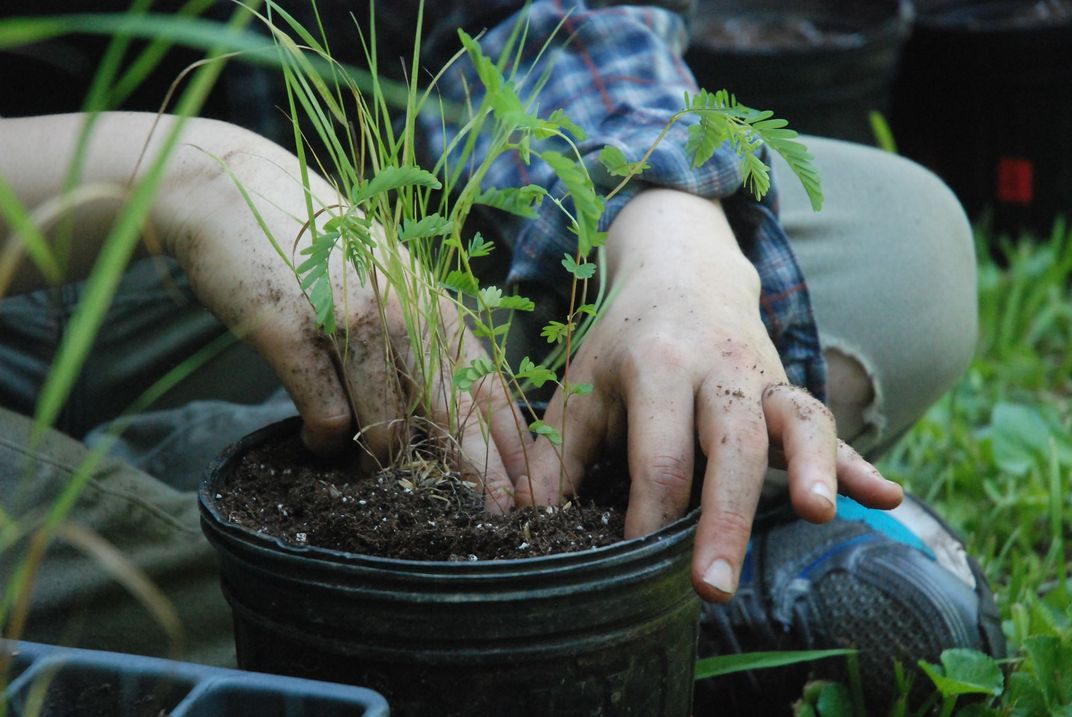
What did you learn from this experience?
Austin: I learned how to be a better communicator. I’m usually a very quiet person – I don’t speak unless spoken to and I never initiate conversations – but with this, you had to ask questions and communicate your needs, problems, and ideas. It slowly brought me out of my shell, so I thought that was really cool.
Brenneman: I had never done an experiment at this scale, from start to finish, with all of the literature searching, implementing, harvesting, and interpreting. That was a really good experience – to know how science works and how to overcome obstacles that come up during that process. I’d never been in a lab before, so it was also a good experience to learn how to ask for help and work with people on a big project.
Smith: I learned a bit more about how to deal with the disorder of the natural world. In the past, I mostly did research that involved modeling things on a computer. Working in the field reminds you that the modeling you do on a computer is very much a simplification. When we were counting the different types of leaves, the cutoff between categories of “emerged” and “emerging” was somewhat arbitrary, so we had to talk about how things in the natural world are sometimes on a spectrum. Whether I’ll be the person collecting data or inputting it into a computer in the future, understanding the nuance that goes into data collection is important.
What makes you optimistic about the future?
Smith: I think that the way people have been forced to take things online could be really promising for collaboration in the future. As people get used to having to interact remotely, more people can get involved in scientific networks despite space and time constraints. I didn’t expect that we would be able to do as much as we did, or that I would feel that I got to know the people that I was working with remotely.
Austin: As far as conservation goes, I think there’s a lot of hope as younger generations start to see what’s going on and take it seriously. I think that once we start flooding the field, there will be a lot of hope for the future.
Brenneman: Working with people at SERC really inspired me, because I saw proof that there are dedicated, intelligent, and hardworking people doing important work and finding important results. To see that in the field that I want to enter gives me a lot of hope for the future.
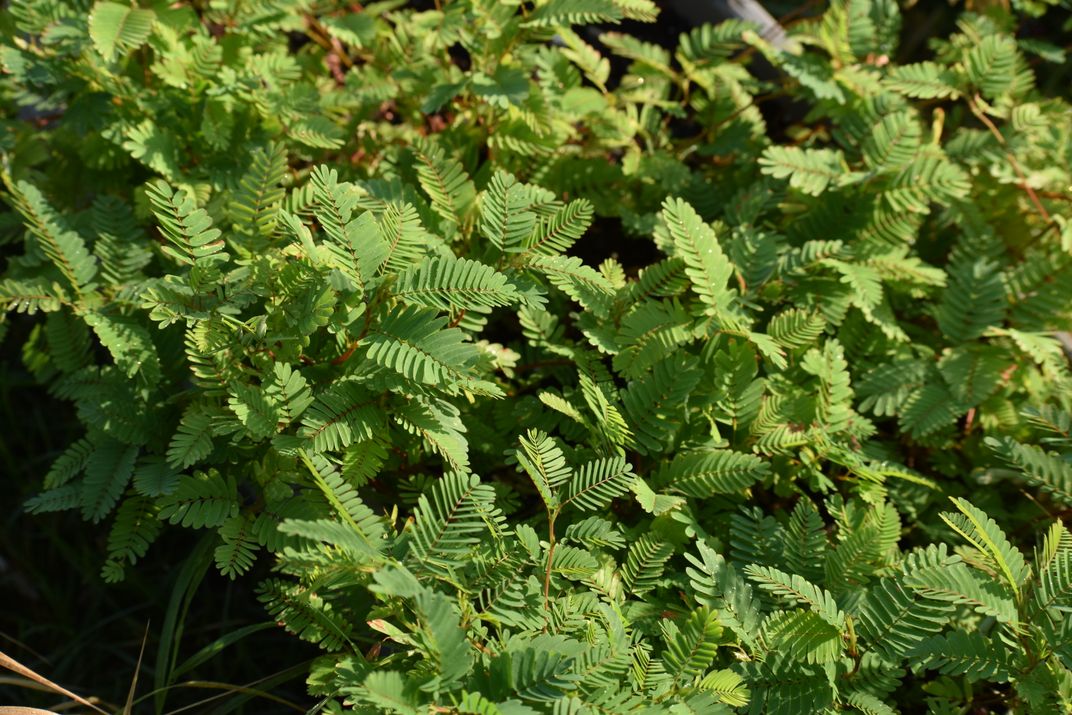
Bonus question from Amy Hruska: Did you experience any “fieldwork fails,” and what did you learn from them?
Austin: Oh, I’ve got a few! My mom thought I was taking too long with measurements, so she offered to help a few times, but she would mess up the labeling and I’d have to go back and re-measure things. During the first two weeks, my computer would overheat outside, so there were a few times that my data didn’t save because of poor Internet connection or the computer took too long buffering. I have no idea what I’m going to do with those empty cells, but we’ll figure it out, because that’s what we do!
Brenneman: No matter how careful I was, every time I went to water the plants, my hose would always knock over at least one pot. The hose started half my yard away, so right when I would get to the end of watering, I would hear a really loud THUNK! One time, I was measuring and my mom came out with our dog. While we were talking, we caught our dog trying to take a bite out of several of the plants, but I managed to save them! The other thing that was frustrating was that I had this one sensitive partridge pea that was always closed every time I went out to measure leaves. At 7 in the morning, it was closed. I went out at noon, and it was closed. When I went and checked in the evening, it was closed. Every day, it was the exact same thing. I had to wait until halfway through harvest to measure it. I put it in my garage for a day, thinking maybe it just didn’t like the sun, and it finally opened!
Smith: I think my most obvious fail was the fact that rabbits ate most of my sensitive partridge pea to some degree or another over the course of the experiment. That had me pretty alarmed at the beginning, but now, herbivory is just another one of the things we’re measuring. While my friend and I were harvesting, we were packaging some soil to process in the lab. We had envelopes and paper bags, and since it would have been tedious to fill the envelopes, we put them in the paper bags. The soil was too moist, though, so when we went to put the bags into boxes to mail out, the soil would just fall through the bag! We had to redo them, and I couldn’t believe I let myself get so far into the process before realizing that it wasn’t going to work.
This interview has been edited and condensed for clarity.
